I have though a Very Long Time about it, but I don't understand why you use a 3.3 V regulator if you want 3 V :-).
The resistors you mention are used with adjustable output voltage regulators to set the output voltage. Fixed 3 V regulators won't have them.
In any case you need an LDO (Low Drop-Out) regulator if your input-output difference is only 2 V. There are plenty of those these days, for instance the NCP1117 has become popular because it's used on Arduino boards. You'll have to use the adjustable version, because 3 V is not among the fixed output voltages.

This is where the resistors come in. You'll have a dissipation of (5 V - 3 V) \$\times\$ 750 mA = 1.5 W, which is a bit high for the 1117's SMT package, a TO-220 package will handle that much better. The MCP1826 exists in a fixed 3 V version, and has a junction-to-ambient thermal resistance of 30 °C/W, then at 1.5 W the temperature will only rise by 45 °C, which will be acceptable.
